Table of Contents
| Which essential oil is best for relieving headaches? |
|---|
| The answer varies depending on individual preferences and the type of headache. However, peppermint oil is frequently recommended for its analgesic and cooling properties, which can help alleviate tension headaches. Lavender oil is also popular for its calming effects, particularly beneficial for migraines. Experimenting with different oils can help identify the most effective one for your specific needs. |
Essential Oils as Natural Remedies
Do you often find yourself reaching for painkillers to combat those stubborn headaches? You’re not alone. Headaches affect millions worldwide, disrupting productivity and quality of life. But what if there was a natural alternative that could help alleviate the throbbing pain without the side effects of conventional medication? Enter essential oils for headaches.
Essential oils have been used for centuries as natural remedies for various ailments, including headaches. These potent plant extracts offer a gentle yet effective way to relieve headaches naturally, providing relief without the risk of dependency or adverse reactions commonly associated with pharmaceuticals.
In this article, we’ll explore the fascinating world of essential oils for headaches, delving into their science, efficacy, and practical application. Whether you’re battling tension headaches, migraines or sinus pressure, essential oils hold promise as a holistic approach to managing and reducing the frequency and intensity of headaches.
So, if you’re tired of relying solely on painkillers to get through the day, it’s time to discover the healing power of essential oils for headache relief.

Understanding Headaches
Before we delve into the world of essential oils for headache relief, let’s first understand what exactly we’re dealing with when it comes to headaches.
Headaches come in various forms, each with its own set of symptoms and triggers. The most common types include tension headaches, migraines, cluster headaches, and sinus headaches. Tension headaches often feel like a dull, achy pressure around the head, while migraines can be more intense, often accompanied by nausea, sensitivity to light and sound, and visual disturbances.
These headaches can be triggered by a multitude of factors, including stress, dehydration, poor sleep, hormonal changes, and even certain foods or environmental factors. Understanding your headache triggers is essential for effective management and prevention.
While over-the-counter medications and prescription drugs are commonly used to manage headaches, they often come with unwanted side effects and can lead to dependency if used excessively. This is where essential oils for headache relief come into play. By harnessing the natural healing properties of plants, essential oils offer a gentle yet effective alternative for relieving headaches naturally, without the risk of harmful side effects.
So, whether you’re dealing with the occasional tension headache or debilitating migraines, exploring the potential of essential oils for headache relief could be the key to finding lasting comfort and relief. Let’s dive deeper into the science behind these natural remedies and how they can help alleviate your headache woes.
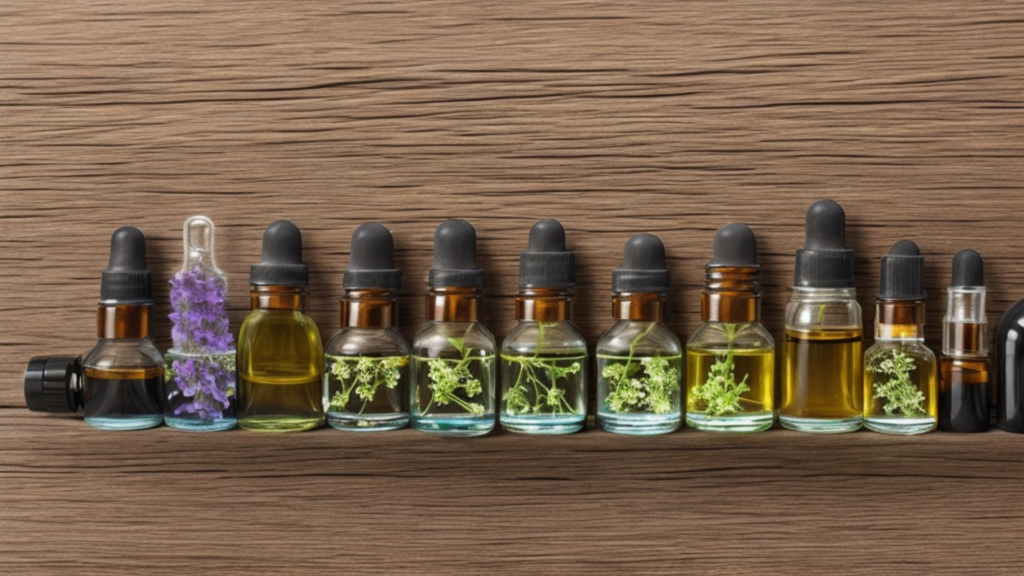
The Science Behind Essential Oils for Headache
Now that we’ve touched on the basics of headaches and the potential of essential oils for headache relief, let’s take a closer look at the science behind these aromatic wonders.
Essential oils are highly concentrated extracts derived from various parts of plants, including flowers, leaves, stems, and roots. These oils contain a complex mix of volatile compounds that give them their characteristic fragrance and therapeutic properties.
When it comes to relieving headaches, essential oils work in several ways. Many essential oils possess analgesic (pain-relieving), anti-inflammatory, and calming properties, making them effective at soothing headache symptoms and reducing discomfort. For example, peppermint oil contains menthol, which has a cooling effect and can help alleviate tension headaches by promoting muscle relaxation and improving blood flow.
Moreover, essential oils can be inhaled or absorbed through the skin, allowing their beneficial compounds to enter the bloodstream and exert their therapeutic effects. Inhalation, whether through a diffuser or steam inhalation, allows the aromatic molecules of essential oils to travel to the brain via the olfactory system, where they can influence mood, emotions, and pain perception.
Research into the efficacy of essential oils for headache relief is still ongoing, but several studies have shown promising results. For instance, a study published in the National Library of Medicine found that inhaling lavender essential oil reduced the severity of migraine headaches and shortened their duration. Similarly, research has shown that applying diluted peppermint oil to the temples and forehead can help alleviate tension headaches and promote relaxation.
By harnessing the power of nature, essential oils offer a natural and holistic approach to relieving headaches. Whether you’re looking to ease the pounding pain of a migraine or simply seeking relief from daily tension headaches, incorporating essential oils into your wellness routine may provide the relief you’ve been searching for. So, let’s explore some of the top essential oils for headache relief and learn how to use them safely and effectively.
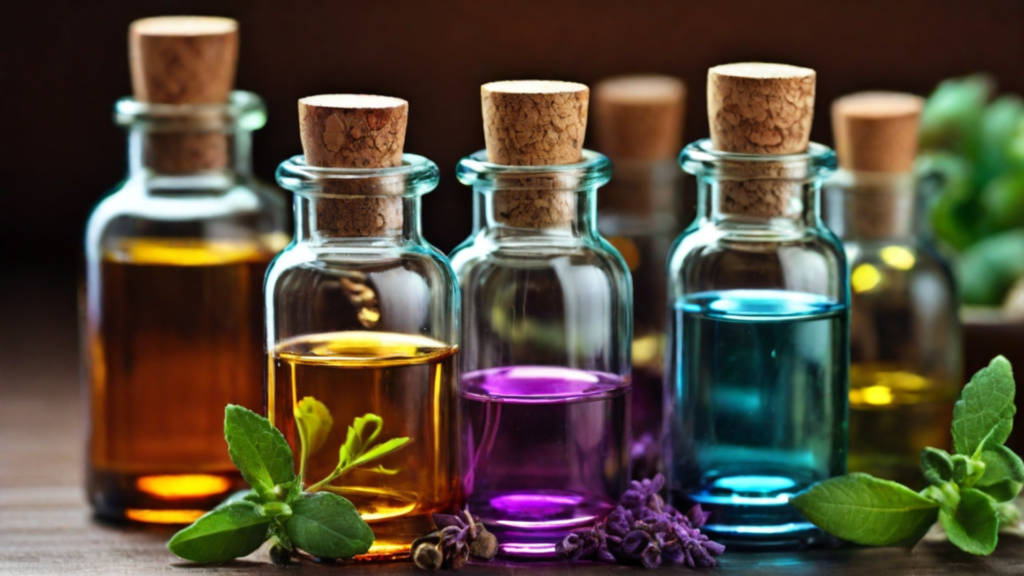
Top Essential Oils for Headaches
Now that we’ve covered the science behind essential oils and their potential to alleviate headaches, let’s explore some of the top essential oils known for their headache-relieving properties.
Peppermint Oil: This refreshing oil is a popular choice for headache relief due to its cooling sensation and analgesic properties. Peppermint oil contains menthol, which can help ease tension headaches by relaxing muscles and improving blood circulation. Simply dilute a few drops of peppermint oil with a carrier oil like coconut or almond oil and apply it to your temples and forehead for quick relief.
Lavender Oil: Known for its calming and relaxing properties, lavender oil is another excellent option for relieving headaches, particularly migraines. Inhaling the soothing aroma of lavender oil or applying it topically to the temples and neck can help reduce migraine severity and duration. Additionally, lavender oil can promote relaxation and ease stress, which are common triggers for headaches.
Eucalyptus Oil: With its invigorating scent and anti-inflammatory properties, eucalyptus oil is a valuable ally in the fight against headaches. Inhalation of eucalyptus oil can help clear nasal passages and relieve sinus pressure, making it especially effective for sinus headaches. You can add a few drops of eucalyptus oil to a bowl of hot water and inhale the steam, or use it in a diffuser to experience its benefits.
Rosemary Oil: This herbaceous oil is not just for cooking; it also has analgesic properties that can help alleviate headaches. Massaging diluted rosemary oil into the temples and forehead can provide relief from tension headaches and promote relaxation. Additionally, rosemary oil has been shown to improve cognitive function, making it a useful remedy for headaches associated with mental fatigue.
Chamomile Oil: Renowned for its calming and anti-inflammatory effects, chamomile oil can be a soothing solution for headaches. Inhalation of chamomile oil vapor or applying it topically to the temples can help ease tension and promote relaxation, making it an excellent choice for stress-induced headaches.
These are just a few examples of the many essential oils that can help relieve headaches naturally. Experiment with different oils and find what works best for you. Remember to always dilute essential oils with a carrier oil before applying them to the skin and consult with a healthcare professional if you have any concerns or underlying health conditions. With the power of essential oils on your side, you can take a holistic approach to headache relief and reclaim control over your well-being.
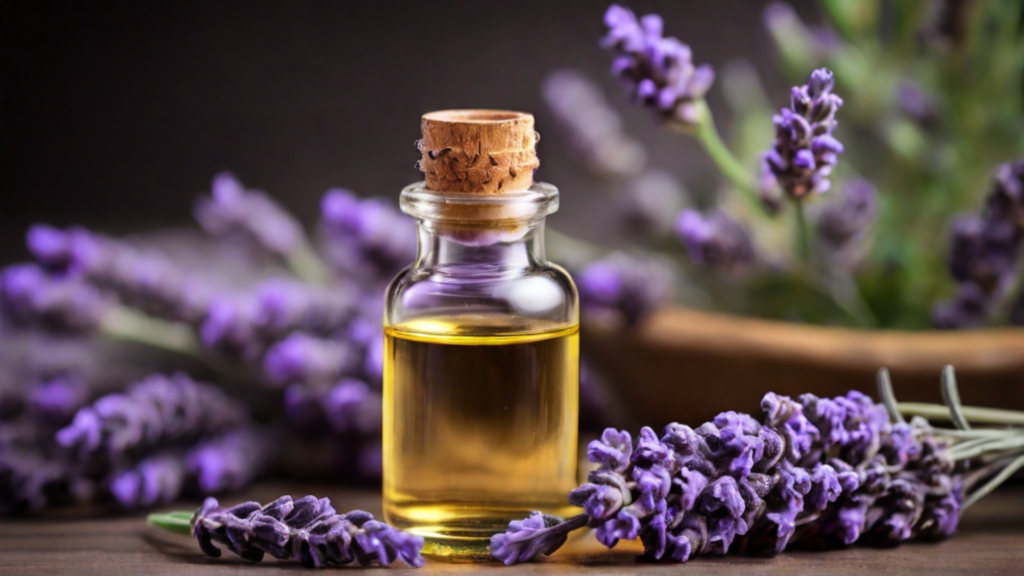
How to Use Essential Oils Safely
While essential oils can be powerful allies in relieving headaches naturally, it’s essential to use them safely to avoid adverse reactions and maximize their benefits. Here are some guidelines for using essential oils safely:
Dilution: Essential oils are highly concentrated and can be too potent when used undiluted. Always dilute essential oils with a carrier oil, such as coconut, almond, or jojoba oil, before applying them to the skin. A general rule of thumb is to use 1-3 drops of essential oil per teaspoon of carrier oil.
Patch Test: Before using a new essential oil, perform a patch test on a small area of skin to check for any allergic reactions or sensitivities. Apply a diluted solution of the essential oil to the inside of your forearm and wait 24 hours to see if any redness, itching, or irritation occurs.
Avoid Contact with Eyes and Mucous Membranes: Essential oils should never be applied directly to the eyes or mucous membranes, such as the nose or mouth. If accidental contact occurs, flush the area with a carrier oil, not water, to dilute the oil.
Inhalation: Inhalation is a popular method for using essential oils to relieve headaches. You can add a few drops of essential oil to a bowl of hot water and inhale the steam, use a diffuser to disperse the aroma throughout the room, or simply inhale the oil directly from the bottle. Be sure not to inhale essential oils for extended periods, as this can cause respiratory irritation.
Topical Application: When applying essential oils topically to relieve headaches, target areas such as the temples, forehead, and neck. Gently massage the diluted oil into the skin using circular motions, being careful to avoid broken or irritated skin.
Consultation: If you have any underlying health conditions or are pregnant or nursing, it’s essential to consult with a healthcare professional before using essential oils for headache relief. Some oils may interact with medications or exacerbate certain health conditions, so it’s crucial to seek professional advice.
By following these safety precautions, you can enjoy the benefits of essential oils for headache relief without compromising your well-being. With proper usage, essential oils can be valuable tools in your natural wellness arsenal, helping you find relief from headaches and promote overall health and vitality.
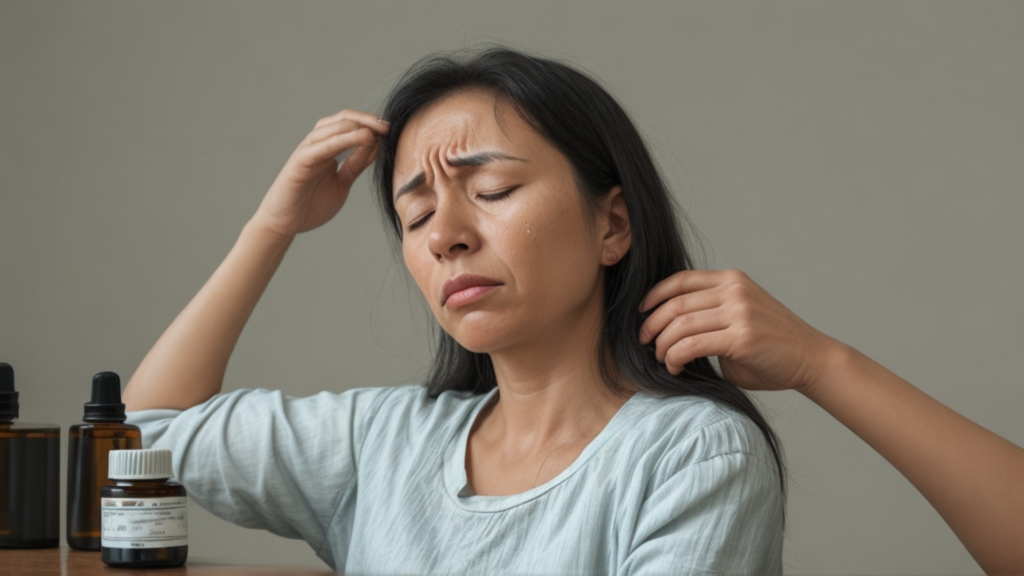
Additional Tips for Managing Headaches
In addition to using essential oils for headache relief, there are several other strategies you can incorporate into your daily routine to manage and prevent headaches naturally. Here are some additional tips to consider:
Stay Hydrated: Dehydration is a common trigger for headaches, so be sure to drink plenty of water throughout the day to stay hydrated. Aim for at least eight glasses of water daily, and consider adding electrolyte-rich beverages like coconut water to replenish lost minerals.
Practice Stress Management: Stress is a major contributor to headaches, so finding ways to manage stress effectively can help prevent them from occurring. Incorporate relaxation techniques such as deep breathing exercises, meditation, yoga, or tai chi into your daily routine to promote relaxation and reduce tension.
Maintain Regular Sleep Patterns: Lack of sleep or irregular sleep patterns can exacerbate headaches, so prioritize getting adequate rest each night. Aim for seven to nine hours of quality sleep and establish a regular sleep schedule by going to bed and waking up at the same time each day.
Identify and Avoid Trigger Foods: Certain foods and beverages can trigger headaches in susceptible individuals. Common culprits include caffeine, alcohol, aged cheeses, processed meats, and artificial sweeteners. Keep a food diary to identify potential triggers and avoid or limit consumption of these foods.
Practice Good Posture: Poor posture can strain the muscles of the neck and shoulders, leading to tension headaches. Be mindful of your posture throughout the day, especially when sitting at a desk or using electronic devices. Sit up straight, keep your shoulders relaxed, and take frequent breaks to stretch and move around.
Consider Acupuncture or Massage Therapy: Alternative therapies such as acupuncture and massage therapy can help alleviate headaches by promoting relaxation, improving circulation, and reducing muscle tension. Explore these options with a qualified practitioner to see if they may be beneficial for you.
Combine Therapies for Enhanced Efficacy: While essential oils can be effective on their own, combining them with other natural remedies can enhance their efficacy. Consider incorporating techniques such as aromatherapy, massage, or hot/cold therapy in conjunction with essential oil use for maximum relief.
By implementing these additional strategies into your lifestyle, you can take a comprehensive approach to managing headaches and promoting overall well-being. Remember that consistency is key, so make these practices a regular part of your daily routine to experience long-term relief from headaches naturally.

Stories and Personal Experiences
Let’s take a moment to look at real-life scenarios of individuals who have experienced firsthand the benefits of using essential oils for headache relief. These scenarios may shed light on how essential oils can help people manage their headaches naturally:
Sarah’s Story: Sarah suffered from frequent tension headaches due to her demanding job and hectic lifestyle. Desperate for relief, she turned to essential oils for help. After experimenting with different oils, she found that massaging diluted peppermint oil onto her temples provided quick and effective relief from her headaches. Now, Sarah keeps a bottle of peppermint oil handy wherever she goes and relies on its soothing properties to keep her headaches at bay.
Mark’s Journey: Mark had been battling migraines for years, trying countless medications and treatments with little success. Frustrated and exhausted, he decided to explore alternative therapies and stumbled upon lavender oil. Skeptical at first, Mark was amazed by the results. Inhaling the calming aroma of lavender oil during migraine attacks helped alleviate his symptoms and reduce the intensity of his headaches. Now, Mark swears by lavender oil as his go-to remedy for migraine relief.
Emily’s Experience: Emily often experienced sinus headaches, especially during allergy season. Fed up with relying on over-the-counter medications, she decided to give eucalyptus oil a try. Steam inhalation with eucalyptus oil quickly became her go-to remedy for sinus headaches, providing relief from congestion and pressure. Emily now incorporates eucalyptus oil into her daily routine as a preventative measure, and she’s grateful to have found a natural solution for her sinus woes.
These personal stories highlight the diverse ways in which essential oils can be used to relieve headaches naturally. Whether it’s peppermint oil for tension headaches, lavender oil for migraines, or eucalyptus oil for sinus headaches, essential oils offer a safe and effective alternative to traditional medications. By listening to the experiences of others, you may discover new ways to incorporate essential oils into your own headache management routine and find relief that works for you.
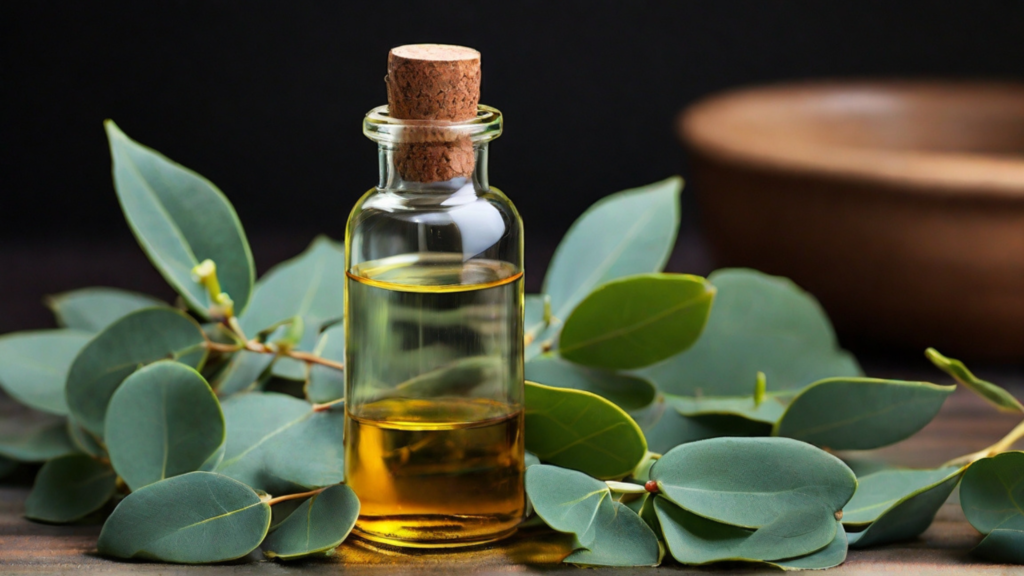
Final Thoughts
In conclusion, essential oils offer a natural and holistic approach to relieving headaches and promoting overall well-being. From tension headaches to migraines and sinus pressure, essential oils have shown promise in alleviating symptoms and providing relief without the side effects of conventional medications.
By harnessing the therapeutic properties of plants, essential oils can help soothe headache pain, reduce inflammation, and promote relaxation. Whether you prefer the cooling sensation of peppermint oil, the calming aroma of lavender oil, or the invigorating effects of eucalyptus oil, there’s a natural remedy out there to suit your needs.
However, it’s essential to use essential oils safely and responsibly. Always dilute them with a carrier oil before applying them to the skin, perform patch tests to check for allergies or sensitivities, and consult with a healthcare professional if you have any concerns or underlying health conditions.
Incorporating additional strategies such as staying hydrated, managing stress, practicing good sleep hygiene, and exploring alternative therapies can complement the use of essential oils and enhance their efficacy in managing headaches naturally.
By taking a holistic approach to headache relief and incorporating essential oils into your wellness routine, you can reclaim control over your health and find relief from headaches in a gentle and natural way. So why not give essential oils a try and discover the power of nature to alleviate your headache woes? Your head—and your body—will thank you for it.

Remie
Remie Dy [pseudonym], founder of RemedyWonders, is passionate about natural remedies and holistic wellness. While she may not hold professional certifications in the field, Remie's personal health journey and transformative experiences have inspired this knowledge hub. RemedyWonders offers thoroughly researched articles for those seeking alternative treatments for common mild ailments. Additionally, references are included below each post for viewers to explore further. As a reminder, always seek professional advice as individual reactions to natural remedies can vary. For more information about the author/founder, please visit our About Us page
